Search Results for "chao ku"
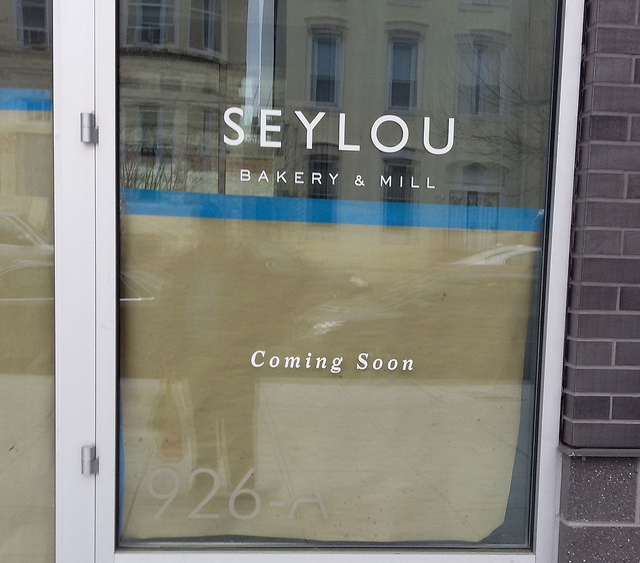
926 N Street, NW
Despite the recent demise of Chao Ku, Piassa, Table, Shaw Bistro and A&D in April – all is not lost for 9th Street. A reader reports this great update:
“The Union Kitchen Market (SE corner of 9/N) is now open, the place that’s going into the old Rogue 24 location (next to La Colombe) looks like it’s close to being done Ed. Note: Monkey King and there’s the bakery (pictured above) at 926 N.”
Seylou Bakery & Mill’s website says:
“opening late Summer 2017
A Whole grain bakery
We specialize in
100% whole grain
freshly milled artisan breads
made in a wood fired oven
as well as
healthy and nutritious
pastries, teas and coffees.
We hope to delight your senses and nourish your body.
Seylou means “eagle” in the Mandinka language of West Africa. Read More
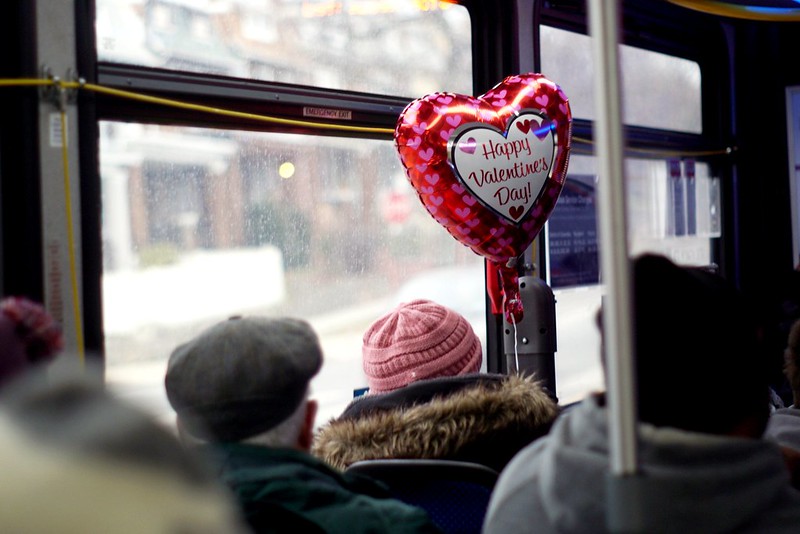
photo by Nathan Castellanos
Ed. Note: If this was you, please email [email protected] so I can put you in touch with OP.
“Dear PoPville,
I was just on a 90 bus heading southeast (Sunday, June 4th around 1pm), and wish I had the chance to chat with this cute woman on board. We both got on at U and 14th. Read More

1414 9th Street, NW
Since Vegetate closed in 2009 the space has become an Ethiopian restaurant called Cafe Eagle then Taqueria Mexicana then an Ethiopian Sports Bar and Restaurant named Eagle (again) then was renamed Northern Restaurant. In July of 2012 Secret Lounge and Sports Bar opened up but closed in Nov. 2013. In February 2017 Choa Ku closed after opening in June 2016. In July 2017 Imm Thai opened and closed in August 2019.
A new liquor license posted out front for Climaxx Bar and Restaurant says: Read More
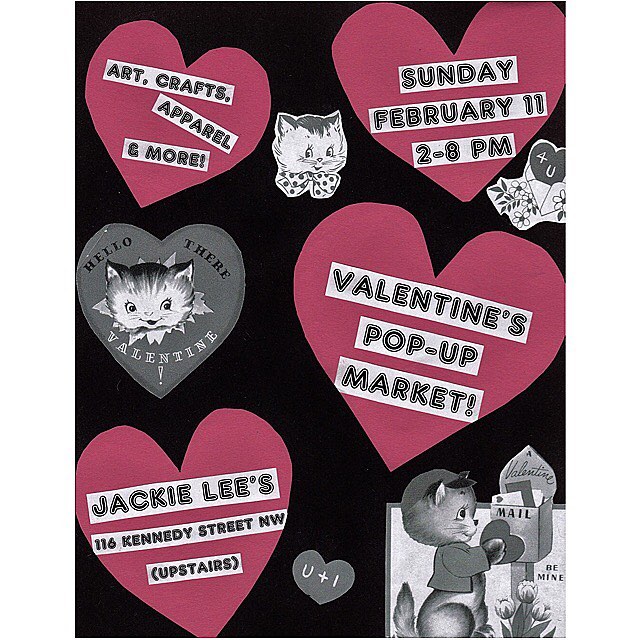
From Jackie Lee’s :
“Sunday at 2 PM – 8 PM
116 Kennedy Street NW
Come treat your sweetie (or yourself!) at Jackie Lee’s Valentine’s Day Pop-Up market. Local vendors will be selling art, crafts, apparel and more!
DJ Dianamatic will be providing the tunes and the kitchen is open for brunch till 3 and dinner starting at 5!
~Confirmed Vendors~ Read More

903 N Street, NW
A reader reports:
“Don Rockwell has the info that Table is closing. Staff was given one week’s notice last Tuesday. Closing after service Feb. 15. Wow.”
Morgan tweets us:
“we officially have a neighborhood crisis @popville #table #AnD #chaoku #nooneissafe???”
Also RIP Dumpster Concealing Garden Wall…
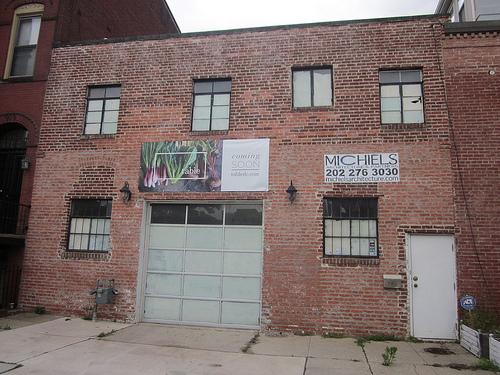
back in 2012
Streets of Washington, written by John DeFerrari, covers some of DC’s most interesting buildings and history. John is the author of Historic Restaurants of Washington, D.C.: Capital Eats, published by the History Press, Inc. and also the author of Lost Washington DC.
In 1857, radical conservatives of the “Know Nothing” party in Washington, imbued with contempt for Roman Catholics, mounted an extraordinary attempt to forcibly prevent the naturalized citizens of Washington from voting in local elections. The result was the infamous Election Day Riot on June 1 at a polling station just south of Mount Vernon Square. The New York Times called it “one of the most daring insurrectionary riots of bloodshed and murder that ever disgraced a city.” Six people were killed by a Marine detachment that was called in to quell the disturbance. While the troublemakers ultimately failed in their attempt to prevent voting by Catholic immigrants, the incident was deeply embarrassing for 19th century Washingtonians and gave them a tangible sense of the tragic consequences of religious intolerance in political affairs.
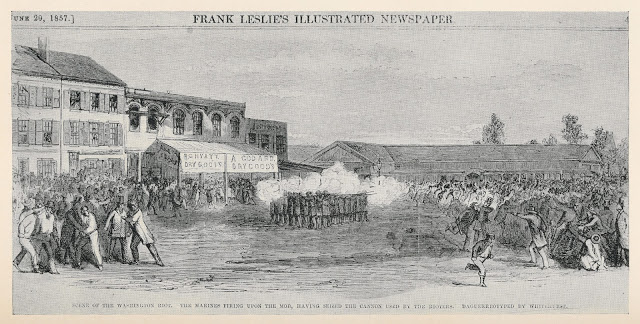
Marines firing on the mob at Northern Liberties Market, from Frank Leslie’s Illustrated Newspaper, June 29, 1857. (Source: Records of the Columbia Historical Society, Vol. 24, 1922).
Upheaval overseas—including the Irish potato famine and the Revolution of 1848 in Germany—led to large numbers of Irish and German immigrants to the United States in the 1840s and 1850s. These desperate people, willing to making the arduous journey to America in hopes of a better life, would enrich the country immeasurably in years to come, and many were happy to see them come. But to Anglo American “nativists,” they were foreign transgressors bent on destroying American society as the Anglos knew it. The nativists pointed to the increasing numbers of destitute and homeless immigrants crowding the nation’s cities—Washington’s notorious Swampoodle was an example—as evidence that the newcomers were bringing the country down. They began organizing themselves in secret to resist the immigrants and all they stood for, especially their predominant religion, Roman Catholicism. Supposedly if a member of this secret group were asked anything about the organization, he was supposed to reply “I know nothing,” and so they became known as the Know-Nothings. Secretly calling themselves the “Supreme Order of the Star Spangled Banner,” the group foreshadowed the growth of the Ku Klux Klan later in the 19th century. Read More
From MPD:
“Three men, all from Washington, D.C., were sentenced Friday to prison terms for their roles in a drive-by shooting on North Capitol Street early March 11, 2013, that injured a total of 13 people, announced U.S. Attorney Ronald C. Machen Jr. and Cathy L. Lanier, Chief of the Metropolitan Police Department.
Andrew D. Allen, 20, Keith D. Bobb, 22, and Arnell L. Smith, 21, pled guilty on July 3, 2014, in the Superior Court of the District of Columbia, to 13 counts of assault with intent to kill and one count each of conspiracy to commit a crime of violence, possession of a firearm during a crime of violence and tampering with physical evidence. Their plea agreements, which were contingent upon the Court’s approval, called for Allen to be sentenced to 25 years of incarceration and for Bobb and Smith each to be sentenced to 20 years in prison.
The Honorable John Ramsey Johnson accepted the plea agreements today and sentenced the defendants accordingly: Allen, to 25 years, and Bobb and Smith, to 20 years each. Upon completion of their prison terms, the men will be placed on three years of supervised release.
“These three men will spend decades behind bars for the terror and chaos they unleashed on North Capitol Street,” said U.S. Attorney Machen. “They left behind 13 victims when they sprayed gunfire into a crowd of innocent people. These prison sentences are a reminder that purveyors of violence and mayhem will be punished harshly.”
“This was a senseless act of violence perpetuated by rival crews,” said Police Chief Lanier. “It is our hope that the sentencing today of these criminals will bring some comfort and closure to the numerous victims who were injured.”
According to the government’s evidence, the violence stemmed from a longstanding conflict between rival groups. The defendants, who had ties to a Northeast Washington neighborhood, were engaged in disputes with a group of individuals associated with the Sursum Corda neighborhood near where the shootings occurred, and also with the area near 10th and G Streets NE. Over the years, various violent crimes between members of the two groups were committed.
Specifically, soon before the shootings, a dispute took place at the Fur Nightclub.
Allen, Smith, and other individuals were among those at the nightclub late March 10, 2013 and early March 11, 2013, when the dispute took place. Afterward, Allen, Smith, and a third individual met with Bobb and, armed, they traveled in two cars to the Sursum Corda neighborhood in search of retaliation. A fifth individual, not responsible for the shootings, also was in one of the cars.
Shortly after 2 a.m., driving in caravan-style, one car behind the other, they traveled to the 1200 block of North Capitol Street NW, near the Tyler House Apartments, adjacent to the Sursum Corda neighborhoood. Smith drove one car, Allen’s black 1999 Mercedes Benz, and Allen fired a Taurus 9 mm semi-automatic pistol, with an extended magazine, from the front passenger seat of the vehicle. Bobb drove the other car, a light blue 1999 Mercedes Benz, close behind Smith and Allen, and his passenger likewise opened fire, using a Glock 9 mm semiautomatic pistol, which also had an extended magazine.
After Allen began to shoot, some individuals, using .40-caliber semi-automatic firearms, shot back at the two cars. The defendants fled the area at a high rate of speed, turning right on H Street NW and running a red light. Red light cameras at the intersection of North Capitol and H Streets NW photographed the license tags of both cars.
The victims included seven men and six women, ranging in age from their late teens to their 30s. One man was shot in the abdomen and back and required multiple surgeries. One woman was shot multiple times in the left side of her body. Another man suffered a graze wound to the chest. Others were shot in the legs, thighs, buttocks and feet.
On the afternoon of March 11, 2013, Allen grew concerned and agitated about televised news accounts of the shootings. The newscasts had footage from the crime scene in which Allen could recognize his car. He decided that he needed to “torch” his vehicle, which had been damaged by gunfire, because it could be identified by law enforcement. He and other defendants headed to the 3000 block of Stanton Road SE, where the vehicle was set on fire to devalue or
destroy it as evidence. Following a series of 9-1-1 calls reporting the blaze, District of Columbia emergency personnel responded to the burning car. The remains of the car were seized by law enforcement, and evidence was recovered that later tied the vehicle to Allen’s family.
In the late afternoon of March 11, 2013, after the car had been destroyed, Allen, Bobb, and Smith resolved to get rid of the guns used in the shootings on North Capitol Street. The three received a ride to an apartment complex in Northeast Washington, D.C. There, Allen and Bobb met with another individual and traded away the Taurus and Glock pistols used in the North Capitol Street shootings in return for two Ruger semi-automatic pistols. Read More

Dear PoPville,
Every morning, I drive down 9th Street to work downtown. For months, I’ve accepted the traffic delays from the construction sites at O Street (City Market), L Street (new hotel) and K-H Street (City Center), since ultimately the projects will make the area so much better.
But there’s something that drives me crazy. These construction sites each have workers equipped with stop signs who stop traffic whenever they want so they can move their construction vehicles in and out at will. An official traffic officer would take into account the flow of traffic and the needs of all drivers, pedestrians and construction crew in determining how often or when to stop traffic. These unofficial traffic directors just do it whenever they feel like it. Especially in the thick of rush hour, this can cause total chaos.
You’ll see the light is red when the picture was taken (see above), but the “traffic officer” kept cars held up through the green light so that construction trucks could zip in and out. This was at the hotel site on L Street. Holding traffic through a green light cycle causes gridlock and backup for several blocks.
My question — is this actually legal? I’m all for construction getting completed quickly, but if these construction companies need to work through rush hour, I think they should be more respectful of residents and commuters.
Streets of Washington is the brilliant blog covering some of DC’s most interesting buildings and history written by John DeFerrari. John is also the author of the equally brilliant Lost Washington DC. ‘Streets of Washington Presents…’ will feature some fascinating buildings and history from around PoPville.
The Old Post Office building at 12th Street and Pennsylvania Avenue NW is easily recognized and admired these days, though it wasn’t always so. The building was threatened with demolition in the early 1970s and spurred the creation of Don’t Tear It Down, a group dedicated to preserving the city’s historical heritage. After successfully pushing to save the Old Post Office, Don’t Tear It Down, which eventually was renamed the D.C. Preservation League, went on to advocate for many other historical structures in the city and continues to be the city’s leader in encouraging real estate development that doesn’t needlessly destroy important historic structures.

Postcard view of the Old Post Office (Author’s collection).
Monumental as the building is, people have wanted to change it almost since the day it was completed in 1899. The site for the new building was the south side of Pennsylvania Avenue, always the less-desirable side of the street in the 19th century. The land south of the avenue where an old creek had been turned into the city canal tended to be swampy, unstable ground, not particularly suited to construction of large buildings. The area immediately to the west of the Old Post Office had been known as Murder Bay during the Civil War, an area of dingy saloons, gambling dens, bordellos, and ramshackle frame shanties housing hundreds of poor people, mostly African-Americans. “The water soaking through from the canal kept the ground continuously wet, and the feet of the people passing churned the soft ground into black and odorous mud, making even the ground consistent with the depravity that existed there,” remarked The Washington Post in 1888. In the decades after the war, the worst problems had been addressed; the old city canal was turned into an underground sewer, and light industrial buildings—machine shops and lumber yards—began to fill the area. It was this edgy, semi-industrial neighborhood that was chosen one day in 1890 to be home of the enormous new government office building.
Continues after the jump. Read More

